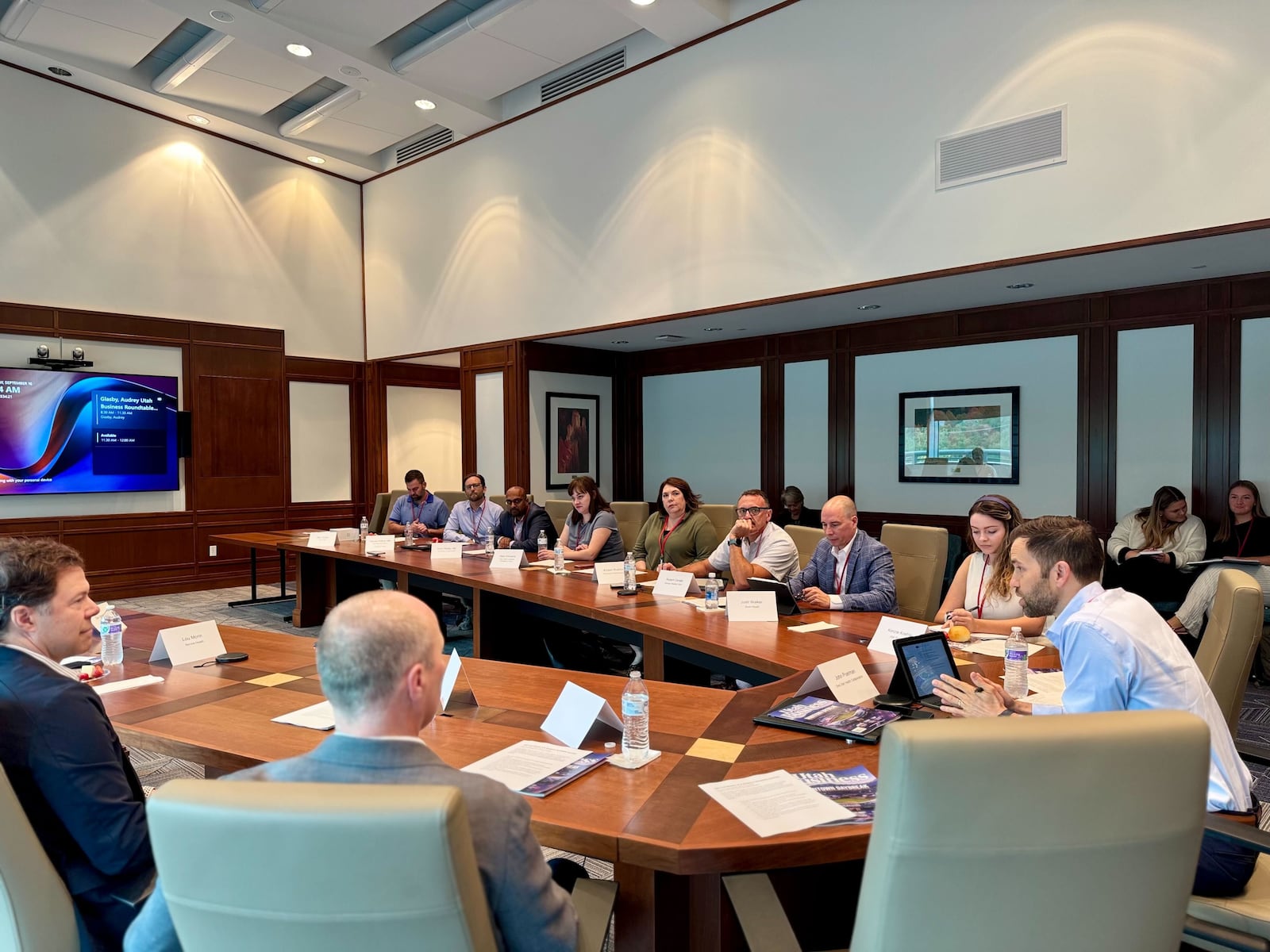This story appears in the October 2025 issue of Utah Business. Subscribe.
Last month, Utah Business partnered with Regence BlueCross BlueShield to host a roundtable on the current environment of artificial intelligence in healthcare. This conversation was moderated by John Poelman, director of One Utah Health Collaborative.
What trends in healthcare AI broadly are most exciting or impactful from your perspective?
Dan McMaster | Strategy & Corporate Developer | Solventum
Administrative waste. There are a lot of different estimates of those numbers, but around $500 billion of waste is spent on just the administration, the reimbursement process and documentation. … The other is assisting clinical decision support — getting embedded in different medical devices and using healthcare data to better diagnose.
Lou Morin | CEO | Savvos Health
I look at AI driving scalability and innovation. We’ve got a lot of innovative ideas that are happening in healthcare today, but we’re still implementing many of them in manual processes. … We start looking at not only innovation, but the way that AI can bring scalability quickly to just a new way of transacting together.
Josh Walker | Founder & COO | Nomi Health
One is that generative AI is moving from pilot to workflows. We’ve been tinkering with it — or, in some cases, using it — but now mainstream workflows are moving out of that pilot phase. Second is AI and regulated devices. You’re starting to see high-tech devices … like Clarius AI, which is a handheld ultrasound [device].
Chris Willis | Chief Design Officer | Domo
I actually think [innovating the] front office … is a really smart place to start because they tend to be lower risk, but they also have a real impact on patient experiences and even outcomes. We’ve seen from larger regional healthcare organizations to even smaller ones that they’re able to start to apply AI to get over the hump of solving some traffic problems.
Chris Coogan | VP & Chief Technology Officer | Regence BlueCross BlueShield
“I would just add, as a payer, the administrative simplification we hear loud and clear. That’s where we’re focused, and we know that we can make decision-making for patients and members faster, easier and clearer through the use of AI. … The faster they can make decisions, the better outcomes of care can be as an informed decision-maker.”
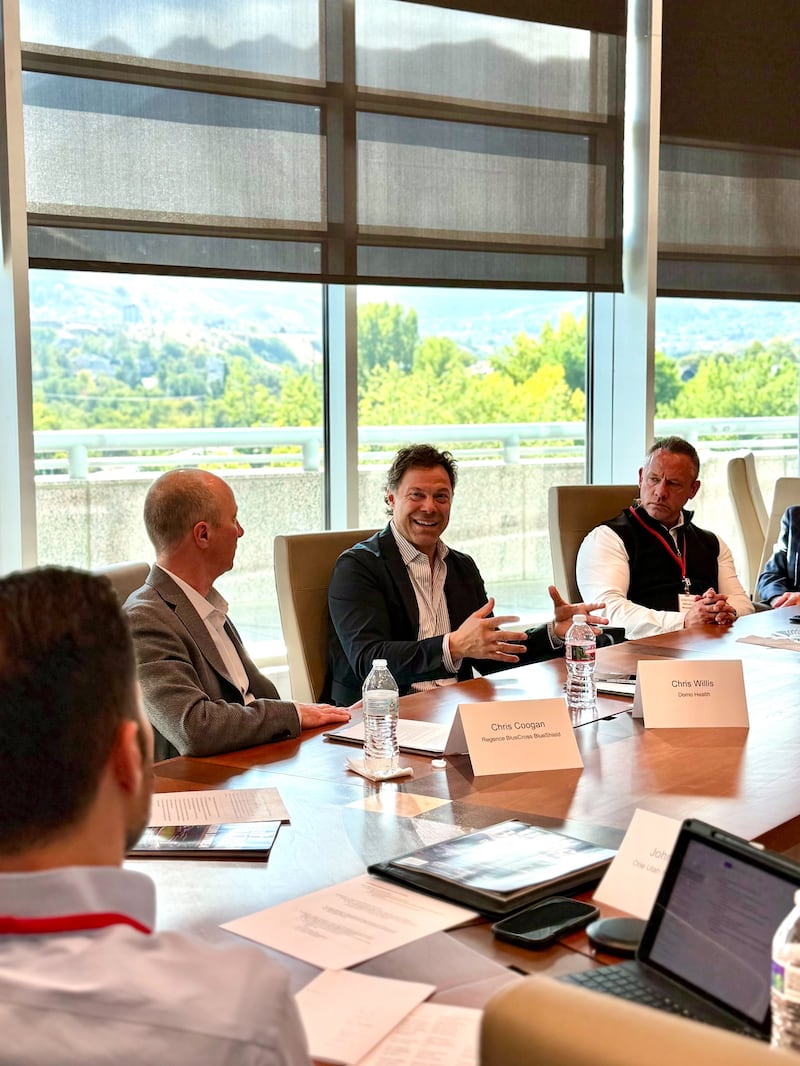
How is AI improving care quality or outcomes for patients and members?
Dr. Vivek Reddy | Chief Medical Information Officer & Executive Vice Chair, Department of Neurology | University of Utah
The introduction of these new AI-enabled tools is allowing us to rethink, now that we’ve got all this data, how do we serve it up in different ways to actually do our jobs differently? … That changes all of the different jobs very, very rapidly.
Warren Pettine | University of Utah Professor | Co-Founder & CEO MTN
The reason I came [to Utah] was the attitude toward innovation. That’s really what drew me. It’s a place that cares a lot about how we take these ideas and get them into the clinic. … On the topic of how AI is improving healthcare, right now, a lot of data is left on the table in the sense that so much is collected from the Internet of Things, from the electronic health record, from payer databases. … So much data is just being wasted right now, and a big part of that is because it’s so labor-intensive to bring that data together.
Robert Condie | CEO | Granger Medical Clinic
The interaction between patient and physician is significantly better. They’re not looking down at the computers. They’re paying attention and they’re listening better. They’re not so focused on getting the notes in. … They’re well rested. They see patients better. They’re more excited to come to work the next day.
Dan Conger | Founder | Enzo Health
A lot of times, when the clinician gets to the house, they really don’t know who they’re seeing. So we’re taking that 1,000-page referral packet and condensing it down into a one-page summary of what they should be focusing on when they get in the house and what they should be looking for.
For those focused on diagnostics or drug discovery, how does your AI work ultimately affect the patient and member experience downstream?
Kristen Rushton | COO | Recursion
Traditionally, 90 percent of new compounds fail in the clinic. That’s the definition of inefficiency and incredibly heartbreaking. … By turning drug discovery into a data problem, it has the potential to find novel targets or unknown disease pathways, better medicine and new medicine for diseases that have been so far untreatable. Then, over time, the benefit is that we potentially have the opportunity to really dramatically lower the cost of drug development because you’re not paying for a 90 percent failure rate.
Dan McMaster | Strategy & Corporate Developer | Solventum
The speed at which we’re able to innovate has been doubled, and the time to market has been cut in half. … Stethoscopes around the world will now be digitized. Doctors used to put the stethoscope on and listen, and based on the acoustics and other knowledge, they made their predictions about heart failure or other diseases. Now that’s all digital. We’ve been capturing all of these recordings. You’re listening to it and then putting that in the database and then analyzing that clinical data, so anybody has the ability to detect early heart failure.
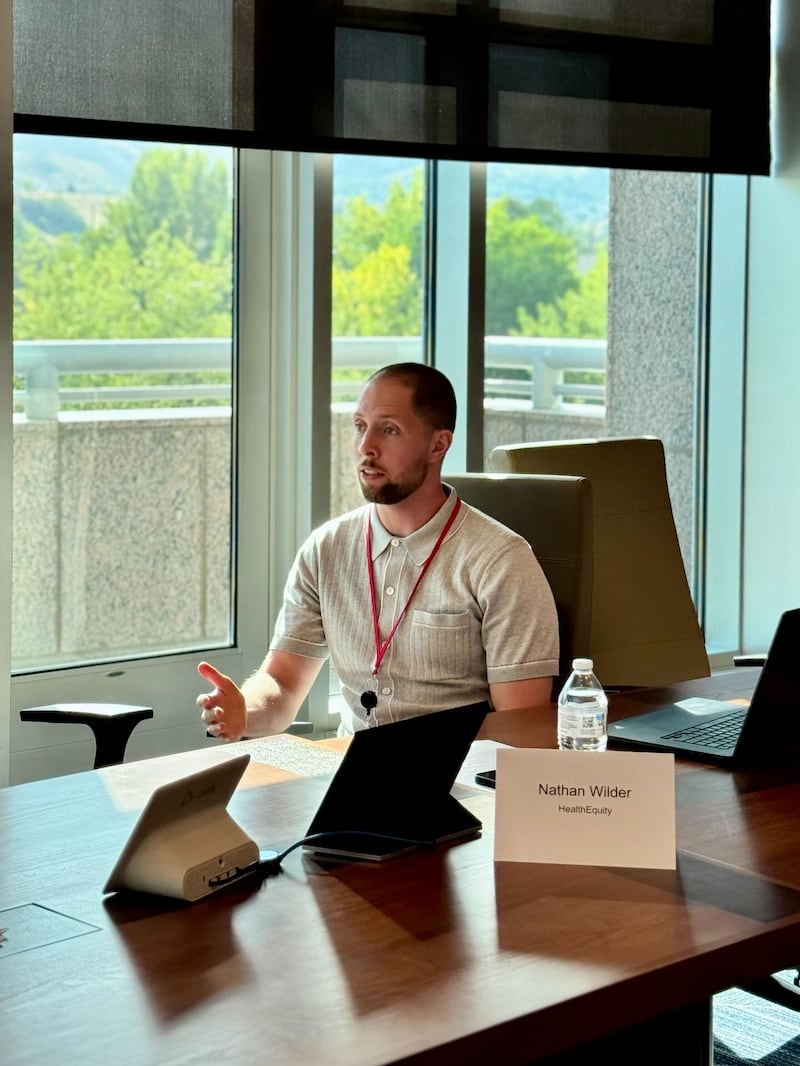
Josh Walker | Founder & COO | Nomi Health
The more data is captured, the better the data becomes in the model, which allows us to identify things we couldn’t have seen before. … Outside of healthcare, they’re applying AI now to whale songs. They’ve been able to see, in the data that they gather, patterns that humans couldn’t have seen prior to that. I think we’ll see the same thing in health, which is the ability to see … beyond the data that, formerly, only one physician could see and have access to.
Kirk Ouimet | Co-Founder & CEO | Phi Health
One of the projects that our company is tackling right now is gathering data from Apple Health and then building the right context to send that into the AI. Our watches and phones are logging every step. … My hope is that we can use AI on the consumer side to start gathering as much data as possible for people throughout their lives so we can do much more work on the preventative side.
How is AI helping patients and members more easily navigate their care, access services, or interact with health systems?
Nathan Wilder | Senior Data Analyst | HealthEquity
How do you better design your plan, given your member population and how they behave? … Given specific members and their behavior, how do we get them to go from this level of engagement to the next level? We’re trying to build incentive programs where we gain information or collect data from the employer based on their goals, and then we use recommendation systems to say, “OK, these are your specific goals, and these are the members’ goals.” … And based on other data that we have across other employers, … let’s find that cross-section between the two and give recommendations.
Chris Coogan | VP & Chief Technology Officer | Regence BlueCross BlueShield
The No. 1 question we get is, “What are my benefits? Am I covered? Where can I get this? What will it cost?” It’s a very routine pattern. The more we can assemble this information and partner with organizations to pull that data together, … we see that as tremendous value to the members that we serve, so that they can navigate the ever-growing complexity that we’re all experiencing in the healthcare landscape.
Lou Morin | CEO | Savvos Health
If I could use one word to describe the business side of healthcare today, it’s misalignment. You feel it on the health plan side; the members feel it; providers feel it. What’s unique about why we are seeing such an acceleration in innovation — and even AI to scale — is that, on the demand side, consumers and health plans have been frustrated for a while.
Josh Walker | Founder & COO | Nomi Health
Looking at the data we have, we process about 7 percent of the United States’ labor force’s healthcare and analytics. There’s no reason that AI couldn’t, and we’re bringing some products to market around the ability to actually do a real-time adjudication on a virtual card at that transaction.
Kirk Ouimet | Co-Founder & CEO | Phi Health
One of the things we’re trying to build and apply is, what if we have the AI wake up once every hour and just think about you for 30 seconds? Have it look at all of the most recent data that it’s gathered about you, and then make recommendations? Maybe it could message you or talk to you. Right now, if you were to go to the doctor, the average time that a person has face time with the doctor is 14 minutes. … The way that this system is set up is that the doctor can’t think about you … they can’t look at all of your data and really give each person the true amount of time that their health deserves.
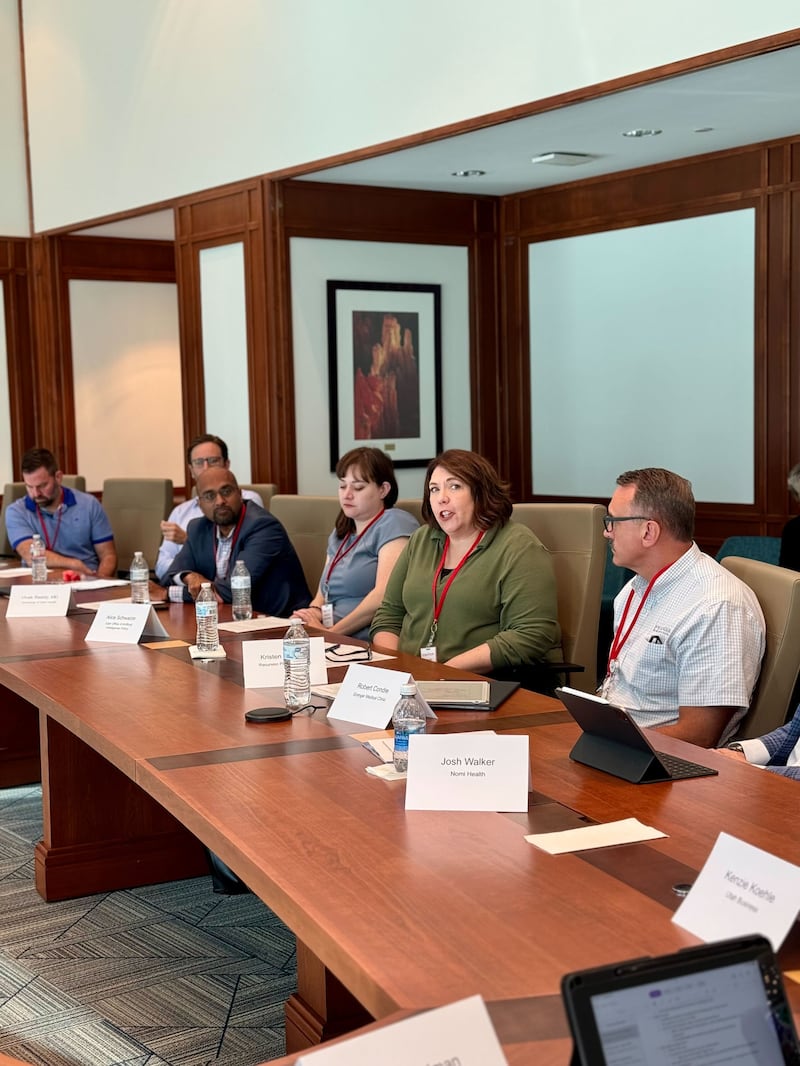
Dr. Vivek Reddy | Chief Medical Information Officer & Executive Vice Chair, Department of Neurology | University of Utah
Healthcare is still incredibly personal. That connection point, even though it’s short, is really important for outcomes. … But to have intelligent information that can give me a new insight or a new angle, I find that our roles as physicians and other providers are going to change. And it’s not going to be just diagnostic.
Warren Pettine | University of Utah Professor | Co-Founder & CEO, MTN
In terms of reimbursement, a big block that we’ve seen in remote patient monitoring is that clinicians have got to spend 20 minutes reviewing the patient, so AI solutions that can turn that into 30 seconds are disincentivized … It’s been a major barrier. It’s huge and it’s starting to happen, but I don’t think the barriers are necessarily technical.
Lou Morin | CEO | Savvos Health
When you think about this correlation between efficiency and affordability in healthcare, it’s important to recognize that about a year ago, we spent $4.9 trillion in healthcare in this country and only $1.2 trillion went to front-end clinicians. … But it’s important to recognize that, on the clinical side, so much of our spend has nothing to do with the care of the patient. It’s all behind the scenes in a very inefficient, bloated business transaction from beginning to end.
What does “responsible AI” mean in practice? How do you make sure it works safely, predictably and observably for patients, members and clinicians?
Dan Conger | Founder | Enzo Health
If we change a prompt or swap out a model in our whole AI pipeline, we have the confidence that we have the scoring available to us to know if that AI is going to behave responsibly in the documentation that it’s producing or the suggestions that it’s giving to clinicians. And honestly, just taking the time to build out that eval framework has actually accelerated our velocity over time, even though it slowed us down at the start.
Alice Schwarze | Head of Research, Office of Artificial Intelligence Policy | Utah Department of Commerce
Especially in terms of healthcare and privacy, some things need to change and be more tied to how these algorithms benefit from data sharing. In turn, patients can benefit from high-quality algorithms. Finding a balance there is something that we think about a lot.
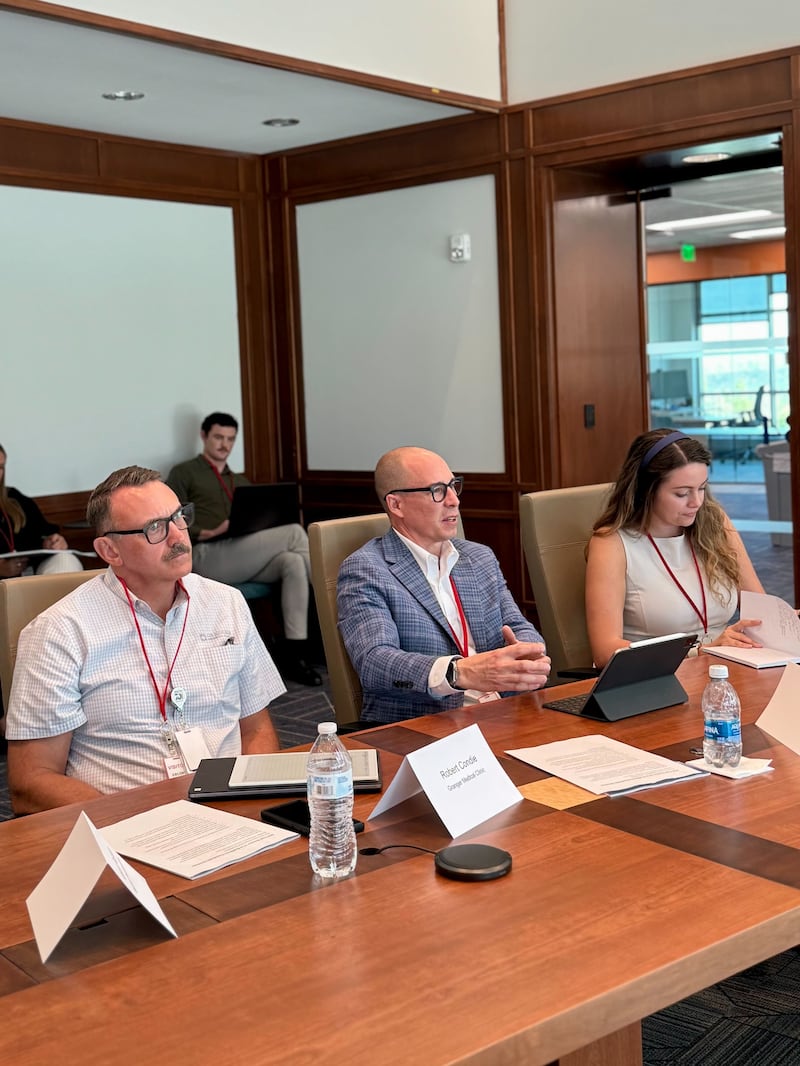
Kirk Ouimet | Co-Founder & CEO | Phi Health
We’re in this formative time. I’m imagining that we’re at least two more years until we are in a spot where the AIs are going to be very, very good at preventing this type of negative feedback loop from occurring. We just have to watch out for that. In the meantime, my goal with our company is to start storing the data and protecting it so that, as the AI models get better and better, … we can prepare a really good health record for us and our kids and our medically dependent people, and then we’ll be able to present these questions to these AI models that get ever more powerful and more intelligent.
Robert Condie | CEO | Granger Medical Clinic
My wife had surgery, and it took us forever to get [the preauthorization paperwork] taken care of. It was rejected 44 times. If we release assets, that money can be spent on preventative health or reducing healthcare costs. … We have to work on [AI that develops] administrative solutions.
Lou Morin | CEO | Savvos Health
So when we talk about affordability, we can find savings in the administrative load, but in healthcare, we immediately go to the clinician and say, “We’ve got to reduce the cost of that doctor by 50 percent.” I don’t think that’s the problem. Most issues of out-of-control cost are geographical. It’s where you have the procedure, not who does it. But the reality is that we can get rid of the administrative burden. We should drive savings to the family level. Let’s start reducing out-of-pocket costs there.
Looking five years ahead, which AI innovations will have the biggest impact on patients and members?
Kristen Rushton | COO | Recursion
Within five years, we’ll have far more mature simulations of complex biological systems. Right now, we have maps that are working, but in the future, we’re looking at virtual cell simulations — virtual patient simulations of the whole system and how it works together, versus just a piece of the biology. … We’re going to see a workforce that dramatically changes in terms of its ability to speak to both life science and technology and how critical that’s going to be. It’s going to drastically change the type of people we have working on this problem.
Alice Schwarze | Head of Research, Office of Artificial Intelligence Policy | Utah Department of Commerce
I firmly believe that, in the next five years, we’re going to see quantum computing become industrially viable. … If I have to put my money somewhere, I will put it on a company that’s running simulations because I’m hoping that what you’re saying is actually around the corner. … I’m also hoping that, with quantum computing, there might be some new avenues for storing and safeguarding data in a privacy-focused way.
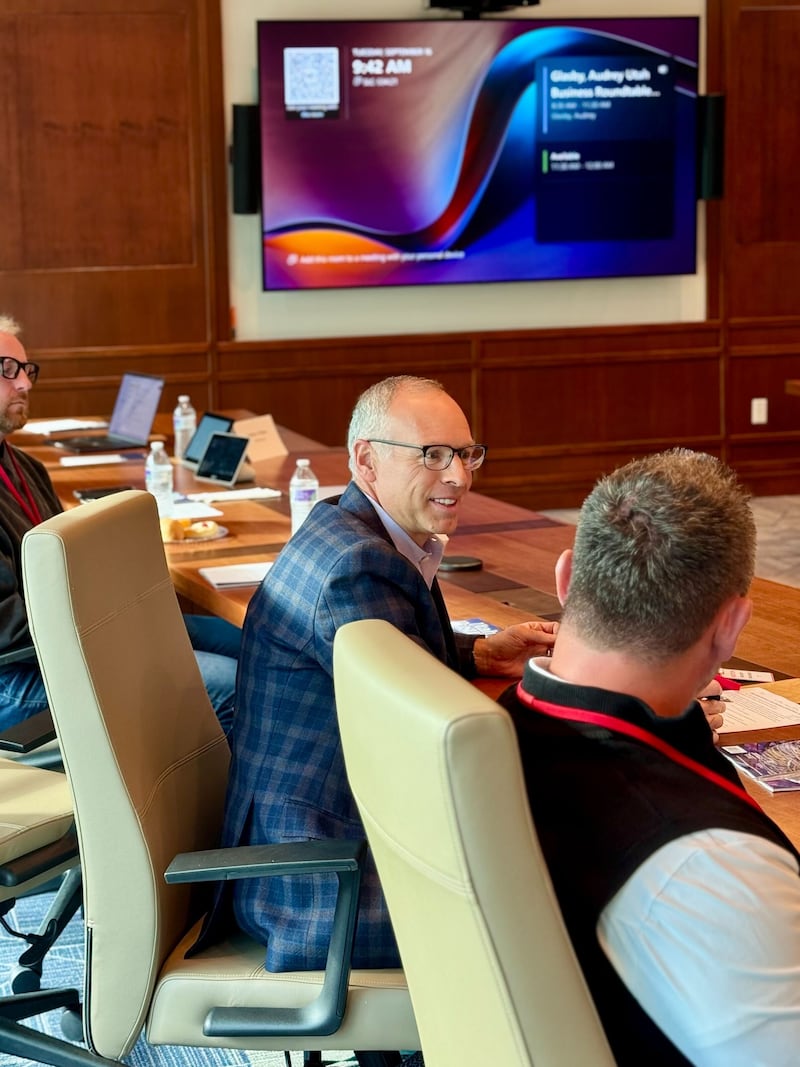
Warren Pettine | University of Utah Professor | Co-Founder & CEO, MTN
Within the next five years, innovation and policy in the back office, data integration — all those things are going to change things in ways that are kind of invisible to maybe even the providers or to the patients.
Chris Willis | Chief Design Officer | Domo
A lot of times, the way we think about how the future is going to go is usually a fairly naive extrapolation of where we are. … Before we had the web or the cyberspace information superhighway, the prediction was that 40 percent of our time was going to be spent surfing the information superhighway, and the other 60 percent was going to be doing something called email. That’s not the way it turned out. There are a lot of ways we looked at the future that just didn’t happen, but we weren’t completely off.
Dr. Vivek Reddy | Chief Medical Information Officer & Executive Vice Chair, Department of Neurology | University of Utah
My optimism in the next five years is not necessarily all in the tech space. It’s actually people thinking about what it means to be healthy and what it means to deliver good, quality care. Reimagining what it means to be healthy, what it means to actually be a healthcare provider — that’s the excitement, that’s the fun. But I would just implore all of us to stop just building off this behemoth we’ve created, right? … Maybe Utah needs to be the place where we start really reimagining that. It’s going to take some courage to break free from the existing model.

